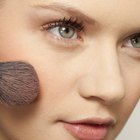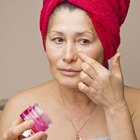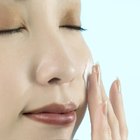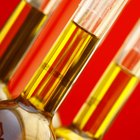
Wavebreakmedia Ltd/Lightwavemedia/Getty Images
bag balm was first released in the late 1800s to help treat a cow's sore udders, but has since grown in popularity as an all-purpose salve for humans, too. Three major products comprise Bag Balm's ingredients—this recipe hasn't changed since it was first created—and give Bag Balm the soothing, moisturizing effects for which it's known.
8-Hydroxyquinoline Sulphate
Bag Balm's manufacturer includes 8-hydroxyquinoline sulfate at a 0.3 percent concentration. In Bag Balm, it works as an antiseptic, according to the National Cancer Institute, helping to kill bacteria. It also acts as a stabilizer to help Bag Balm keep its consistency. The Environmental Working Group's cosmetic database ranks the chemical as a 5 on a scale of 0 to 10, with 0 being safe and 10 being hazardous to your health. According to the group, it may contribute to cancer risks and has unknown effects on the skin when left on for extended periods of time.
Lanolin
Lanolin functions as one of the main bases for the 8-hydroxyquinoline sulfate. In Bag Balm, it helps to both soften and hydrate your skin, according to the National Cancer Institute, potentially resulting in smoother, more supple skin. It's relatively safe, though it may cause an allergic reaction or have uncertain effects when its levels build up in your body, according to the Environmental Working Group.
Petrolatum
Petrolatum is the second base ingredient for the 8-hydroxyquinoline sulfate. Just like the lanolin, it also helps to moisturize your skin. It may also help protect your skin from UV rays and traps moisture in your skin, according to the Environmental Working Group. The group ranks petrolatum as posing a very low health risk—it ranks a 2 on a scale of 0 to 10, with 10 being hazardous—but may be toxic to your organs if consumed.
Related Articles

Neutrogena T-Gel Shampoo Ingredients

Merle Norman Ingredients

Palmolive Shampoo Ingredients

Benefits of Bag Balm for the Face

Ingredients in StriVectin SD

What Is Aloe Good For?

What Is Glycerine Used For?

Benefits of Shea Butter and Coconut Oil ...

How to Make Aloe & Seaweed Lotion

How to Make Homemade Lotion With ...

Aveda Shampure Ingredients

Ingredients in Curel Lotion

What Are the Ingredients in Elizabeth ...

Is Allantoin a Relative of the Lanolin ...

Ingredients in Maybelline Foundation

How do I Care for Eel Skin Handbags?

Neutrogena Ingredients

Ingredients in Restylane

The Ingredients of Neutrogena Sensitive ...

Jojoba Oil Benefits
References
Writer Bio
Joshua Duvauchelle is a certified personal trainer and health journalist, relationships expert and gardening specialist. His articles and advice have appeared in dozens of magazines, including exercise workouts in Shape, relationship guides for Alive and lifestyle tips for Lifehacker. In his spare time, he enjoys yoga and urban patio gardening.
Photo Credits
Wavebreakmedia Ltd/Lightwavemedia/Getty Images